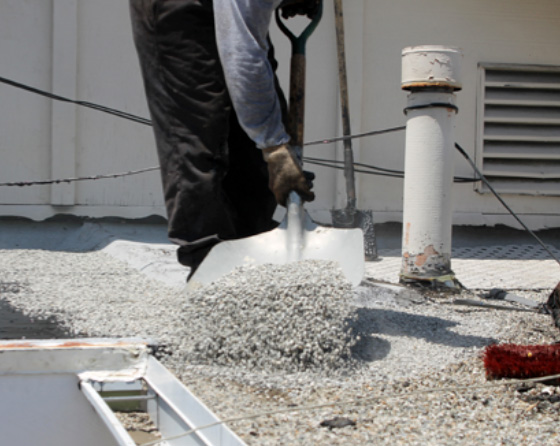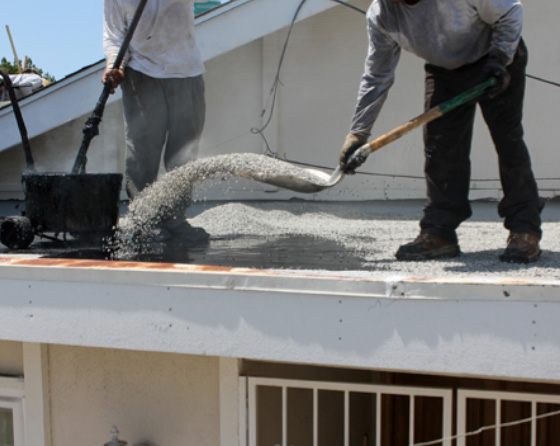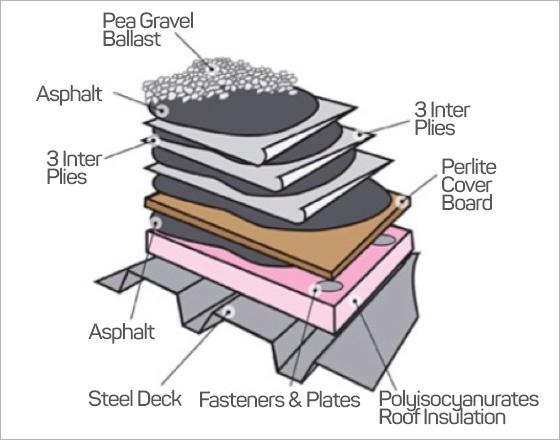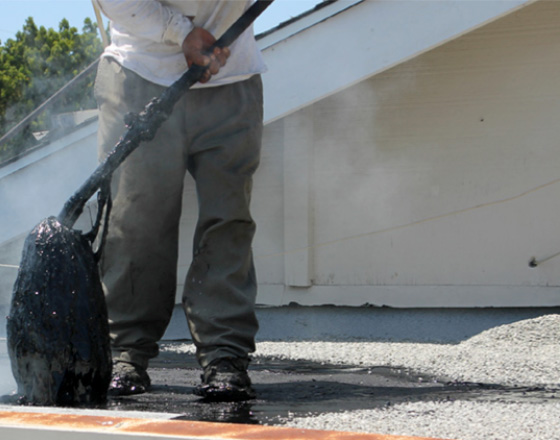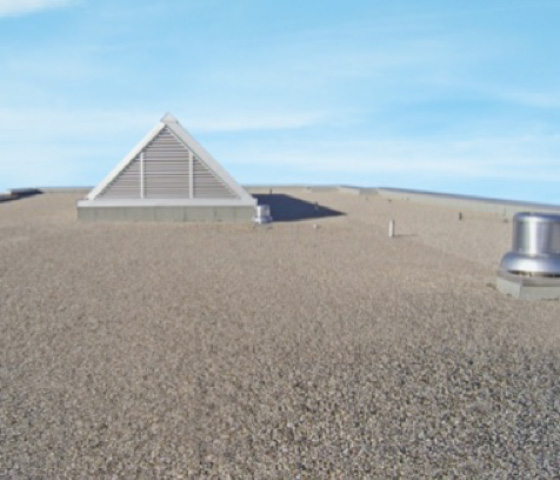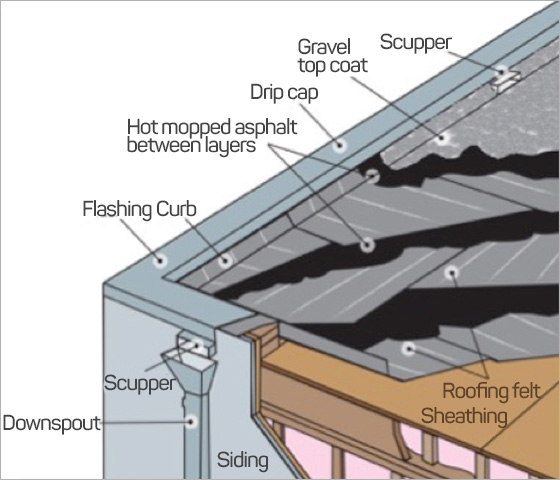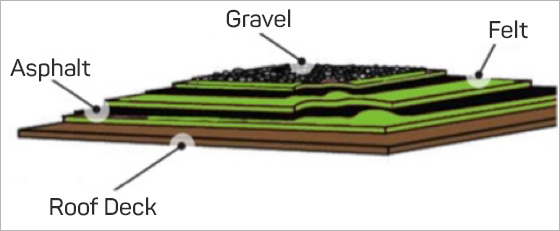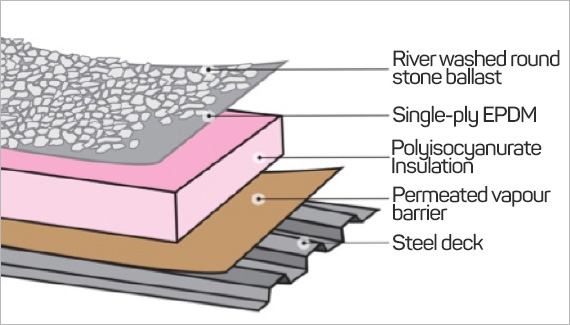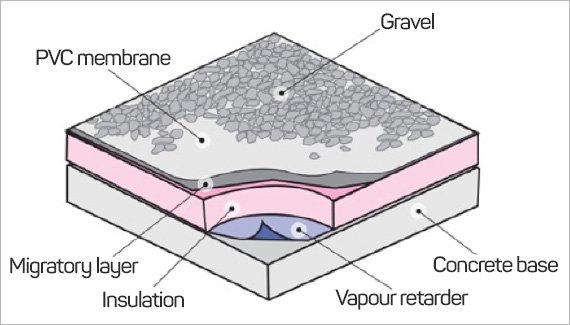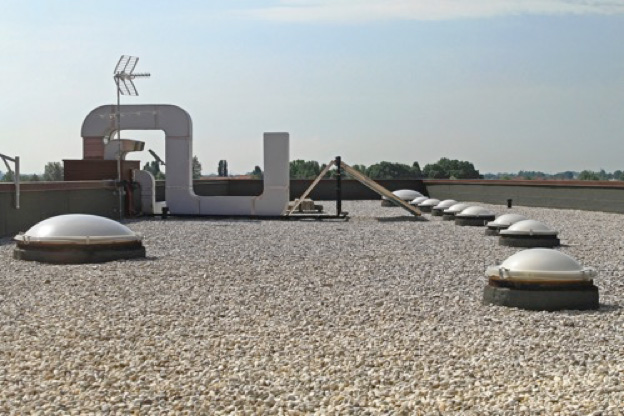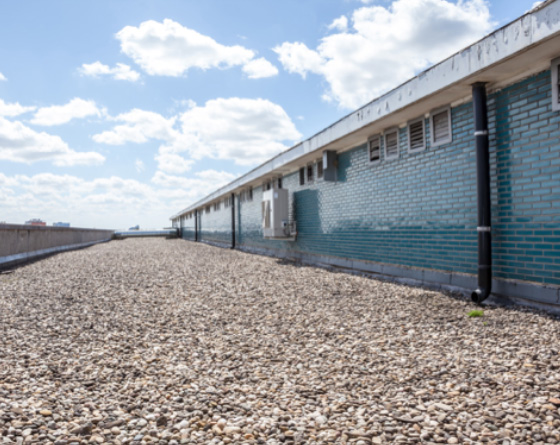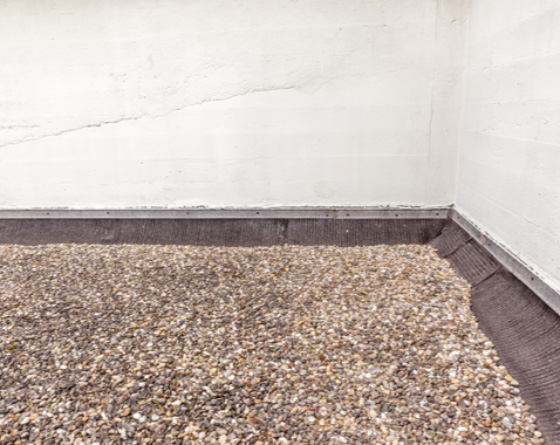The purpose of gravel on a flat roof
On many flat-roof (low-slope) commercial buildings, it’s common to see gravel on top of the roof. Have you ever wondered why contractors install gravel on flat roofs?
Gravel is used on flat roofs for two reasons:
- To protect the underlying layer of roofing materials, as is the case with built-up roofs (BURs).
- To weigh down or secure the roofing material, as is the case with single-ply flat roofs.
There are different types and weights of gravel used on flat roofs for these purposes.
Gravel to protect Built-Up Roofs
A built-up roof (BUR), sometimes called a tar-and-gravel roof, is a tried-and-true style of flat roof. Here, alternating layers of roofing felt (usually fiberglass) and hot-applied asphalt are combined to create a long-lasting roof system.
A layer of gravel, or small stones, is applied on top of the final coating of asphalt to protect the roof from the elements, including ultraviolet (UV) rays and hail. The gravel is embedded into the top coat of asphalt (known as a flood coat), which helps the gravel stay in place. (Source: American Society of Home Inspectors.)
The weatherproofing layer of gravel gives the roof’s surface a longer life and helps prevent cracking, blistering and degradation, which could lead to leaks or other material failures over time.
Even though the asphalt waterproofs the roof (highly important for flat roofs), the gravel provides an important, life-extending extra layer. Although commonly called “gravel,” the top layer is usually some sort of aggregate material (such as pea gravel, slag or mineral granules).
BUR aggregate is usually pea-sized, about a quarter-inch thick, and is used to impart the Class A surface burning designation in accordance with mandatory requirements for ASTM E108, UL790 or CAN/ULC S107M. (Sources: Absolute Roof Solutions, WATERPROOF! Magazine.)
Added benefits of BUR flat-roof gravel
- Because the gravel holds and releases heat, the layer of gravel on a BUR flat roof can both help water evaporate and keep heat away from the underlying roof structure.
- The gravel provides a better grip for foot traffic when conducting maintenance or repairs.
- The gravel also acts as a protective measure to prevent natural debris (such as leaves) from flowing towards and clogging the drains of the flat roof, instead, trapping them in place.
Modified bitumen roofs are a mix of asphalt and rubber with a layer of gravel embedded in the top layer of material during manufacture to provide UV protection. No additional gravel on the roof is required. (Source: Roofing Contractors Association of British Columbia.)
Gravel on a ballast roof system
Ballast is a different style of gravel, which is applied to single-ply roofing systems. Although the primary purpose of ballast is to weigh down the roofing materials, it also offers similar protective benefits as described above.
Ballast is commonly used with roofs made of tar-and-gravel roof alternatives, including ethylene propylene diene monomer (EPDM), polyvinyl chloride (PVC) and thermoplastic polyolefin (TPO) single-ply flat roofs.
Single-ply roofing materials aren’t self-adhered, nor are they sealed together in any way. Since nothing secures the waterproofing membrane to the roofing materials underneath, ballast is needed for weight to protect the roof from strong winds.
Ballast is different from BUR protective gravel. Ballast stones are usually one to two inches thick and applied more generously than on a built-up roof. The heavier stones provide substantial protection against wind gusts. (Source: Roofing Southwest.)
A ballast system helps cut roof system application costs, as it takes less time to install since sealing the layers together isn’t necessary. Ballasted flat roofs are a popular choice, especially for commercial buildings.
Additional benefits of ballast on a flat roof
- The gravel in a ballasted roof helps absorb heat, preventing the sun from heating the roof materials below and making the roof more energy-efficient. (Sources: WATERPROOF! Magazine and Roofing Southwest.)
- Although single-ply roofs inherently have sun-protective qualities, ballast provides an extra layer of protection from UV rays.
- Ballast also protects against hail and from foot traffic during repair or maintenance work.
- Because the ballast stones are “loose-laid,” and not embedded into a layer of tar (asphalt), the gravel is easy to move when conducting repairs or maintenance.

